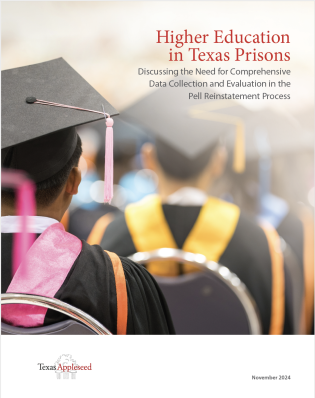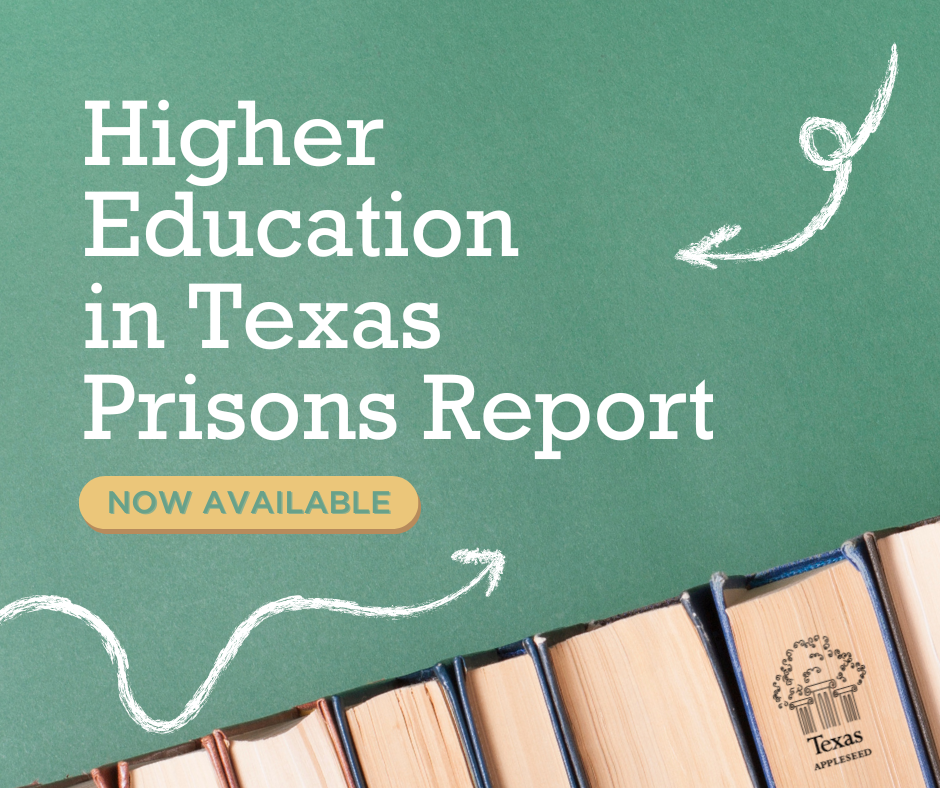Suggested Copy
While the reinstatement of Pell allows greater access to higher education for incarcerated students, there’s still a critical need for comprehensive, data-driven programming to maximize student success. Read Texas Appleseed’s report, “Higher Education in Texas Prisons: Discussing the Need for Comprehensive Data Collection and Evaluation in the Pell Reinstatement Process,” to see what Texas can do to build a sustainable path to reentry through postsecondary education.


